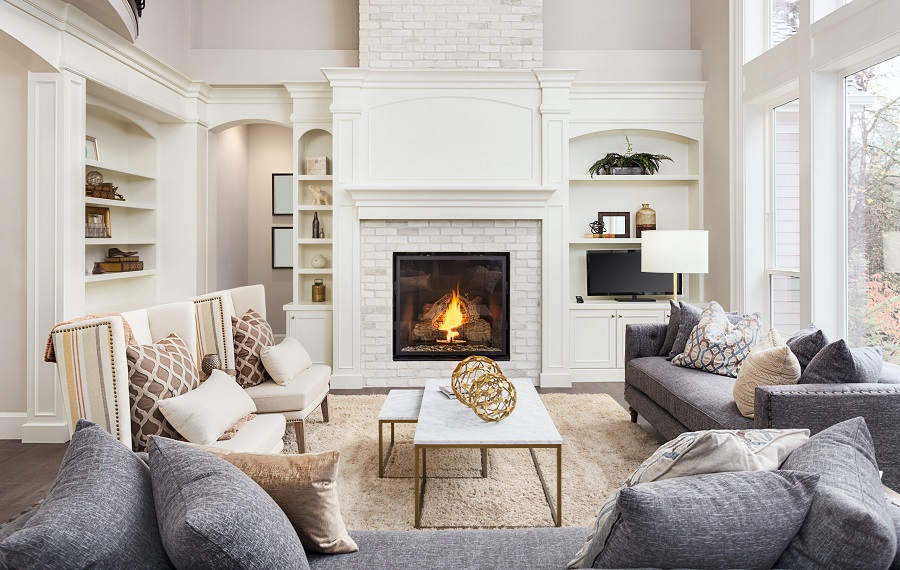Achieve a Timeless Home Design with These 6 Suggestions

Trends in the interior design world come and go. A color or motif that’s popular today, for instance, may no longer be in style the following year.
Certain design elements, however, will never go out of style. A home with a “timeless design” will look relevant and fresh today, tomorrow and for many years to come.
Pulling off this kind of design, however, takes skill and thoughtful consideration. When designing a timeless and beautiful interior, take note of these six tips:
-
Opt for Wooden Floors
Wood is a sought-after material for flooring and home surfaces, as it offers warmth and timeless appeal. Whether you’re purchasing engineered oak flooring or buying ordinary wood for home improvement, know that wood can bring beautiful texture to bedrooms, living areas and entryways.
If you want to further enhance the timeless appeal of wood flooring, apply these simple design tricks:
- Continue wood flooring throughout the rooms in your home. You want the floor to naturally flow from one room to another. Consistency in flooring can make your interior aesthetically pleasing.
- Use rugs to soften wood floors. This material lacks the softness of a carpet. Placing area rugs on top of wood flooring helps anchor accent chairs and sofas into a cohesive group, as well as define sitting areas in open spaces.
- Mix wood tones between furniture and flooring. Disregard ideas that require wood tones to match. Pull off a collected-over-time look by purposefully blending the stained and polished with the rough and rustic.
-
Conceal Technology
You can make a room in your house look timeless by hiding tech gadgets. If you have devices that are the center of attention, use furniture to camouflage them.
The good news is that you can easily conceal many gadgets around your house. Gadgets, such as speakers, game consoles, stereos, Wi-Fi extenders and computers are becoming smaller over time. Their size makes hiding these devices easy on your end.
Some machines, unfortunately, may be more challenging to conceal. Take the television set as an example. Even though fewer people are using traditional TVs, they need to be visible. If this is an issue in your living room, you’ll need to figure out how to decorate around this gadget to camouflage it and keep your room classic and timeless. Otherwise, consider keeping this technology behind closed doors.
-
Design with Classic Patterns
A room that features a timeless style is one that uses classic patterns, such as plaids, stripes, botanicals and damasks.
The rule of thumb is to steer clear of trendy prints, such as strong geometrics, animal prints and chevrons. Although these design options can brighten up a space when thoughtfully implemented, you cannot guarantee that they will stand the test of time.
When using classic patterns, go for a minimum of three patterns in a single room. Then, vary up the scale. You could, for example, use a small plaid, a medium stripe and a large botanical.
-
Layer Neutrals
Going all out with bright colors may be tempting, but they won’t help make the rooms in your home look timeless. You must respect colors and use restraint.
You could layer light neutrals with deeper tones. If you insist on applying bold shades, use them as accents. Your goal is to achieve “understated elegance” when designing your house with a timeless style.
-
Position Mirrors Strategically
Mirrors reflect light, make a cozy room appear larger and provide a great sense of depth. If you plan to use them, refrain from positioning them anywhere.
When you’re setting up mirrors, make sure that they’re not reflecting awkward corners and spaces. Instead, install them in a way that reflects the visually pleasing parts of your room. This way, your mirror becomes a piece of art.
-
Decorate with Symmetry in Mind
The human eye likes balance and symmetry. Regardless of what happens with decorating styles, balanced rooms will always be nice to check out.
You can achieve symmetry by doubling up on items, such as two chairs and two cabinets. This lets you produce matching halves that make up the entire room.
Take note, though, that not every element in your house has to be a pair. You’ll want to use pairs to accessorize a single focal point. A few design examples include:
- A single sofa with two matching chairs in front
- A coffee table with two poufs on either side
- A pair of lamps or vases and a decoration of your choice in the middle
Your design goal should be to create a mirror image on each side of a living space or balance the elements on one side with the other.
Use these design techniques to build a space that looks beautiful years or decades down the line. When you want to make a room timeless, remember these four words: elegance, subtlety, symmetry and simplicity.